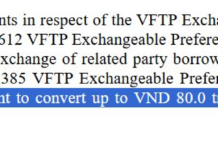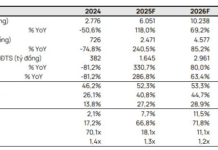
Mr. Nguyen Duc Le – Domestic Market Management and Development Department
The forum “Vietnam’s Gold Market: Opportunities and Challenges in the New Phase” was held by Kinh tế & Đô thị Newspaper in collaboration with Hanoi Goldsmith Association on the afternoon of November 24th.
Speaking at the forum on the management of jewelry, Mr. Nguyen Duc Le, Deputy Head of Market Management Operations Division – Domestic Market Management and Development Department (Ministry of Industry and Trade), shared that the jewelry business network in Vietnam is widespread but fragmented, with a large number of small retailers distributed across localities. In many remote areas, state management agencies have not even been able to fully enumerate these businesses and trading points.
This situation not only increases the pressure on management efforts but also causes many enterprises and jewelry production and trading establishments to operate inefficiently, even leading to unhealthy competition.
Over the past period, authorities have tightened inspections of the gold market. However, Mr. Le noted that the biggest bottleneck lies in the inspection of jewelry. The reason is that the number of trading establishments cannot be fully enumerated, while the quality of gold is self-declared by each unit and not mandatory for inspection, leading to numerous violations.
“In reality, we have discovered many products with inconsistent gold purity. Consumers purchasing these products cannot compare the quality of similar products from different units. Meanwhile, the market offers a myriad of gold types (Korean gold, Thai gold, Italian gold, artisanal gold with gemstones, 18K, 24K…)”, said Mr. Nguyen Duc Le.
Notably, many jewelry businesses misdeclare the quality of gold, and there are even discrepancies in weight compared to the information and data declared on the products.
“We have not yet confirmed the origin of the gold and face difficulties in tracing the product’s origin. Therefore, the question arises: should we import gold or not? Is the amount of gold supplied for jewelry production sufficient?”, Mr. Le questioned.

He also mentioned that inspections require various tools and methods, while not all market management officials are proficient in gold crafting techniques. This is a significant limitation in the inspection process, affecting consumer rights protection and causing market management forces to intervene only when there are complaints or reports.
Mr. Le proposed that jewelry enterprises and trading establishments research and develop a pilot street model, where participating stores must ensure transparent traceability and publicly ranked credibility. This approach will create positive competitive pressure, compelling establishments to invest in design, improve quality, and diversify products for consumers.
According to him, this model will not only contribute to building reputable jewelry brands and raising domestic product quality standards but also make the gold market operate more transparently. This is also a crucial foundation for Vietnamese enterprises to build nationally recognized gold brands with the potential to reach international markets.
Mastering the Gold Market: Beyond the ‘Tighten and Control’ Mindset
Leading economist Le Xuan Nghia warns that restrictive gold import policies force consumers to resort to illegal, substandard gold purchases. Effective market regulation requires balancing control with consumer rights, moving beyond a “tighten the grip” mentality.
Horrifying Scene: Filthy Animal Fat Piled in Squalid Conditions, Prepared for Market in Nghệ An
Authorities in Nghe An have recently uncovered and seized 1.5 tons of unsanitary animal fat, with unclear origins, strewn across the floor of a dilapidated processing facility in Quynh Luu.
Unveiling the Shocking Truth: Over 15,500 Counterfeit and Smuggled Goods Cases Exposed in Just 9 Months
According to the Steering Committee 389 of the Ministry of Industry and Trade, over the past nine months, functional units of the ministry conducted 17,746 inspections, uncovering and addressing 15,544 violations. Among these, 133 cases with suspected criminal elements were referred to investigative agencies for further processing.









































